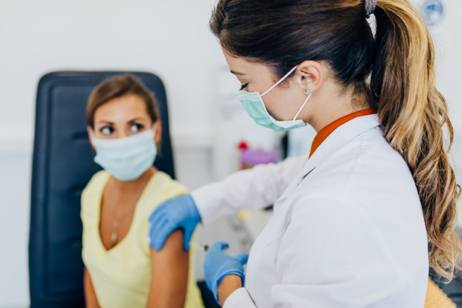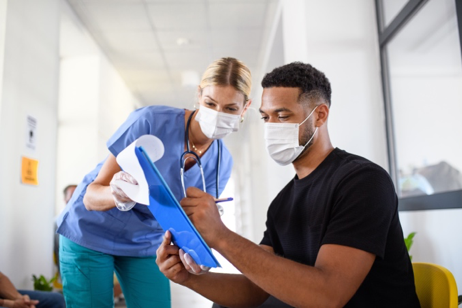 It’s not too late to protect your young adult patients against HPV-related cancers.
It’s not too late to protect your young adult patients against HPV-related cancers.
The HPV vaccine is the best way to protect your patients against 6 types of cancer. The vaccine is recommended for all men and women through age 26 who didn’t complete the series when they were younger. But, only about 50% of young women and about 20% of young men have gotten the HPV vaccine. This means many of your young adult patients may be at risk for HPV-related cancers.
You can protect your young adult patients: Recommend the HPV vaccine every time they visit.
CDC’s Advisory Committee on Immunization Practices (ACIP) recommends HPV vaccination through age 26 for men and women who did not complete the HPV vaccine series when they were younger.
After age 26, some adults may benefit from vaccination. ACIP encourages shared clinical decision-making for HPV vaccination in adults 27 through 45. Read the full recommendation.
What You Can Do
Take these steps to increase young adult HPV vaccination rates in your practice.
Increase HPV vaccination rates in your practice with the evidence-based tips and resources found in our resource, HPV VAX NOW in Your Clinic: A Guide to Improving HPV Vaccination Rates Among Patients Ages 18–26.
 Recommend the HPV vaccine to every patient through age 26
Recommend the HPV vaccine to every patient through age 26
A strong provider recommendation for the HPV vaccine makes it 35 times more likely that a young adult will get the HPV vaccine. Talk about the HPV vaccine with all male and female patients through age 26. And talk about it at every clinical opportunity — including well, sick, or chronic care visits.
What to do during the appointment:
- Review your patients’ vaccination status at every healthcare encounter. If your patients do not know their vaccination status, guide them to resources to find their vaccination records.
- Give them the vaccine the same day you recommend it. Don’t wait for a follow-up visit.
How to make a strong recommendation:
- Recommend the HPV vaccine in the same way you recommend other routine vaccines for patients ages 18 through 26, like the flu vaccine.
- Use a statement that assumes your patient will get vaccinated, sometimes called a presumptive statement, to help motivate your patients to get vaccinated at the current visit instead of waiting for a follow-up visit. For example, you can say, “Today you are due for your first dose of the HPV vaccine. Do you have any questions?”
Learn more about making an effective recommendation.
Encourage your patients not to delay
Some patients may want to delay getting the vaccine. Tell them why it’s better — both for their health and financially — to get the HPV vaccine now. They will listen to you.
Explain the health benefits:
- HPV is common, and some strains of HPV can cause cancer. The HPV vaccine can prevent 6 types of cancer caused by HPV, including cervical cancer, throat cancer, penile cancer, vaginal cancer, anal cancer, and vulvar cancer. The HPV vaccine could prevent 90% of these cancers from ever developing.
- The HPV vaccine can also prevent genital warts.
- The sooner young adults get the HPV vaccine, the better protected they are against HPV-related cancers.
Explain the financial benefits:
- HPV-related cancers are expensive and difficult to treat. The HPV vaccine is inexpensive and easy to get.
- The HPV vaccine is free for most young adults who have health insurance. After age 26, the vaccine can cost hundreds of dollars.
- Cost-saving options are available to those who don’t have health insurance.
Learn more ways to answer young adults’ questions about the HPV vaccine.
 Resources for Your Practice
Resources for Your Practice
Everyone in your practice plays an important role in protecting patients against HPV-related cancers with the HPV vaccine. HPV VAX NOW in Your Clinic: A Guide to Improving HPV Vaccination Rates Among Patients Ages 18–26 has tools to help you raise HPV vaccination rates in your practice.
The package includes:
- Responses to frequently asked questions from young adults about HPV vaccination
- Guidance on how to make an effective recommendation for the HPV vaccine
- Actionable steps and resources that practices can use to improve HPV vaccination rates among young adult patient

